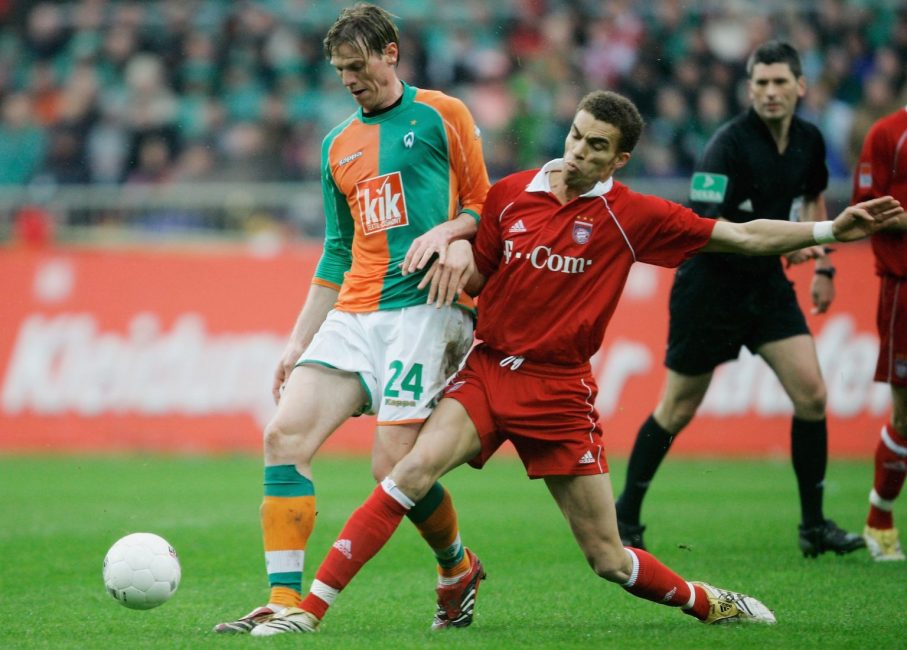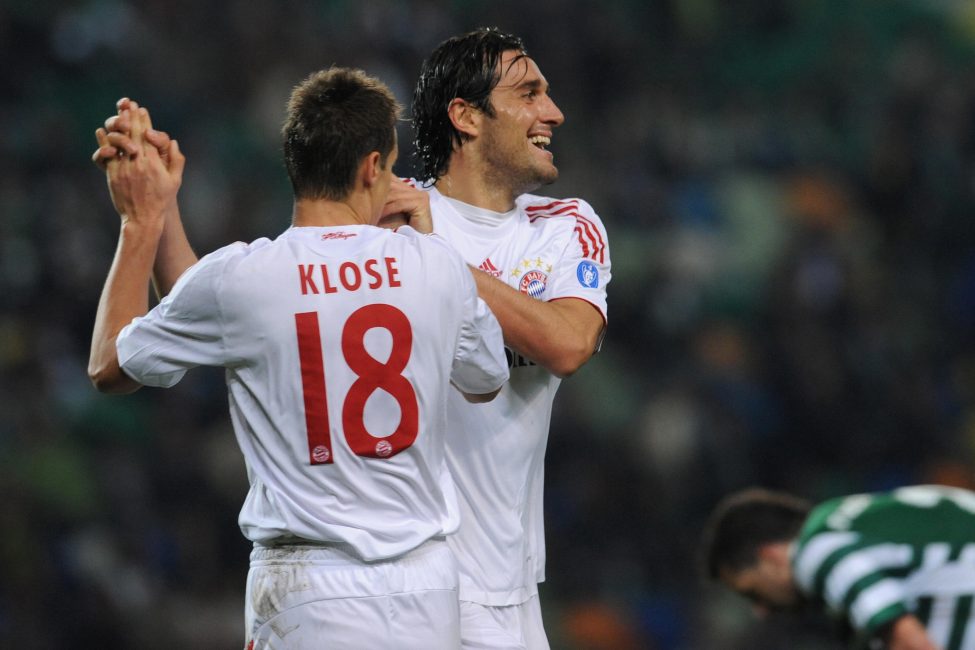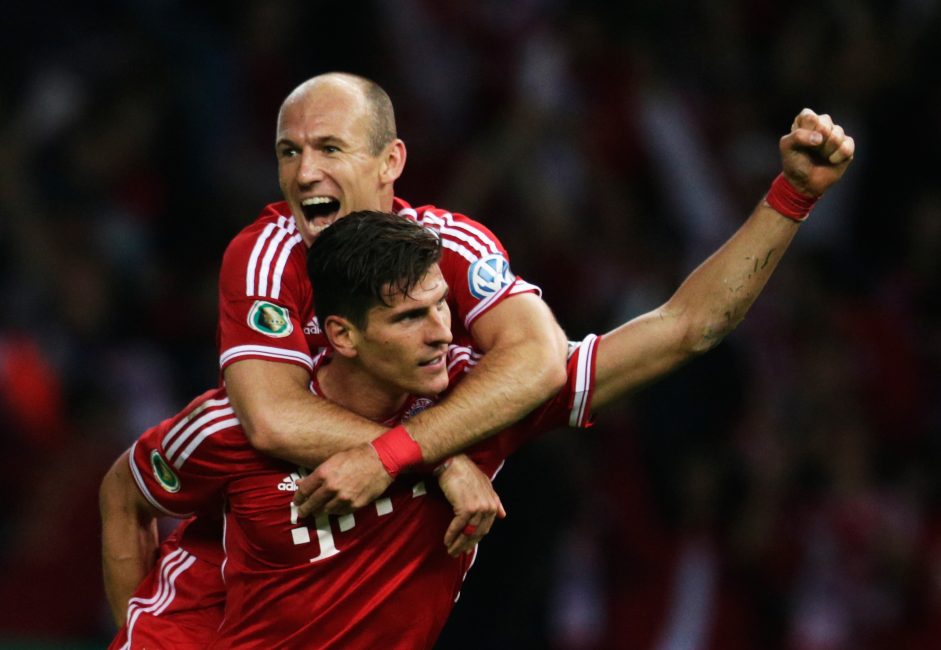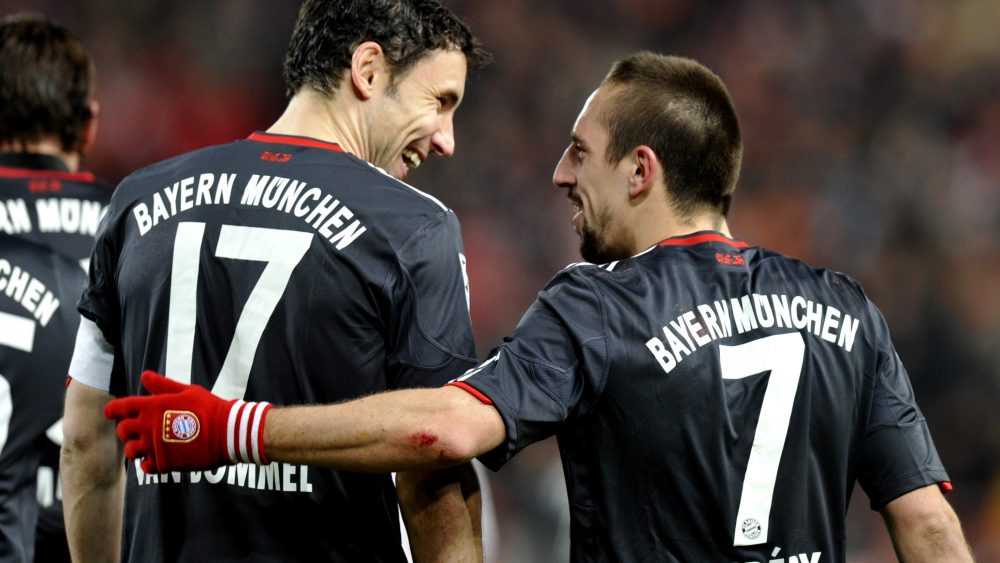FC Bayern’s Signature Signings Episode 2: 2006-2010
In this series, we identify the best signings in each transfer window over a number of years, which we dub the “signature signings”. We make our judgement based on four criteria: Length of club membership, tangible successes, transfer fee, and “it factor”. We have explained these criteria in more detail in the first article of the series, which covered the years 2011-2015.
There are a few further constraints. Players who joined Bayern on loan initially and were signed on a permanent basis only later like Kingsley Coman, for example, are evaluated based on the time of their initial arrival at the club. Winter transfers are included as well. The evaluation in this article covers the period from seasons 2006/07 to 2009/10. Only signed players count. Loan returnees are not included, the same as youth players.
The period covered in this article is particularly interesting because there were four very different coaches with different philosophies in Bayern’s dugout: Felix Magath, Ottmar Hitzfeld, Jürgen Klinsmann and Louis van Gaal. This inevitably raises the question: How did their different approaches affect Bayern’s signings over the years?
Season 2005/06: Valérien Ismaël
€8,5m from Werder Bremen, at Bayern from 2005-2008, 46 games, 2 goals, 2 titles, highest market value: €9m
Other signings: Julio dos Santos for €2.7m from Cerro Porteño, Ali Karimi on a free transfer from Al-Ahli
In the first summer transfer window under Felix Magath, FC Bayern saw no great need to become very active on the transfer market. This is why this transfer period is certainly the weakest in the recent pastboth quantitatively and qualitatively. It is the only transfer window since 1976 from which no signed player has played more than 50 games for the club. Besides young talent dos Santos and Magath curiosity Karimi, Valérien Ismaël was the only noteworthy signing. His transfer also stood out for the fact that he came in exchange for Thorsten Frings, who went back to Werder Bremen.

(Image: Friedemann Vogel/Bongarts/Getty Images)
The Frenchman joined Bayern having been a regular starter at Werder for two successful years, during which he won the Bundesliga championship with his club in 2004. At Bayern, the 29-year-old was supposed to replace ageing left-backs Kuffour and Kovač, who both left the club. He played 44 of 48 matches in all competitions in his first season. Most of the time he played alongside Lucío. However, he could never completely convince. The next season Daniel van Buyten took his place as a regular starter, with Ismaël also fracturing his shin and calf bone in October 2006. He was to play only one more game for Bayern. Ottmar Hitzfeld lacked confidence in the long-term injured 32-year-old, who was moved on to Hanover in winter 2008.
Season 2006/07: Mark van Bommel
€6m from FC Barcelona, at Bayern from 2006-2011, 187 games, 16 goals, 20 assists, 4 titles, highest market value: €15m
Other signings: Lukas Podolski for €10m from 1 FC Köln, Daniel van Buyten for €8m from Hamburger SV
Mark Van Bommel is one of the many summer transfers that left a lasting impression on FC Bayern – just like Robben, Martínez and Alonso after him. The signing of the Dutchman was celebrated as a coup by the German media. Only the year before, the then 29-year-old had won the Champions League with the great FC Barcelona and had been a first team regular in midfield of the Dutch national team at the World Cup . Even though van Bommel always seemed a little out of place at Barcelona and had lost his first team spot under coach Frank Rijkaard before his move, he was one of the few Bayern transfers to make waves internationally in those years.
The defensive midfielder became an undisputed starter at Bayern straight away. He filled the role of the “aggressive leader” (Hitzfeld) created particularly for him with aplomb. He was appreciated – and feared – throughout the league. His career had its share of highlights, and also some less glorious moments. Nothing shows this better than his late goal in the second round of the Champions League 2007 against Real Madrid, which secured Bayern’s progress in the second leg. Van Bommel chose to celebrate this occasion with an obscene gesture that kept the Spanish media on tenterhooks over the next few weeks. Nevertheless, he became the first non-German captain in the club’s history following Oliver Kahn.
His legacy is an interesting one: He was the face of the team that put FC Bayern back on the international map. He played an important role in the signing of Arjen Robben, as he has often said himself. And yet he also left behind unfinished business when he unceremoniously left Bayern for Milan in January 2011 embroiled in a bitter dispute with coach van Gaal.
Season 2007/08: Franck Ribéry
€30m from Olympique Marseille, at Bayern from 2007-2019, 425 games, 124 goals, 182 assists, 16 titles, 1x European Footballer of the Year, 1x German Footballer of the Year, highest market value: €50m
Other signings: Miroslav Klose for €15m from Werder Bremen, Marcell Jansen for €14m from Borussia Mönchengladbach, Breno for €12m from FC São Paolo, Luca Toni for €11m from AC Florence, José Sosa for €9m from Estudiantes, Jan Schlaudraff for €1.2m from Alemannia Aachen, Zé Roberto for €1m from Nacional, Hamit Altintop on a free transfer from FC Schalke 04
After a disappointing season in which they missed out on qualifying for the Champions League, FC Bayern dug deep into their pockets on the transfer market. Top transfer Franck Ribéry became the most expensive player in the history of the Bundesliga and was more expensive than all transfers within each previous transfer window combined. Yet rarely has a signing paid off as much as that of the Frenchman.
From day one, Ribéry elevated the whole team to another level. The then 24-year-old was a winger the likes of which Bayern had not had for a long time. With his cleverness, goalscoring ability, and great vision for his team-mates, he quickly played his way into the hearts of the fans. Over the years, the initially flashy technician Ribéry developed into an all-round world-class player. During his peak from 2011-2014, he scored 39 goals in four seasons and made another 65. However, he remained an important part of the team until the late autumn of his career. Unfortunately, he kept being haunted by injuries time and again, which at one point cost him almost the entire 2014/15 season. A few sparse lines here cannot do justice to Ribéry’s career achievements. For this, I would like to refer you to a collection of his greatest moments and a proper eulogy on him in our blog’s own top 15 in club history.

(Image: Francisco Leong/AFP via Getty Images)
The second place behind Franck Ribéry has to go to Luca Toni. The Italian joined Bayern with the special distinctions of having won the World Cup with Italy the year before and being the reigning top scorer of the Serie A. His trademark goal celebration, the lightbulb screw-in, quickly became Germany’s most famous goal celebration. He did not lack opportunities to show it: He scored 58 goals in 89 games for Bayern. He was a clinical finisher who benefited from his brilliant counterpart Ribéry. But the game developed away from the Italian, who always seemed a little clumsy on the ball. When Luis van Gaal introduced his favored possession oriented football at Bayern, he had no more use for the great Italian, especially once his designated successor, Mario Gomez, was signed in the following summer. What remains is an accomplished player, but one who, like the entire Bayern team at the time, reached his limits in the Champions League.
Season 2008/09: Hans-Jörg Butt
On a free transfer from Benfica Lisbon, at Bayern from 2008-2012, 91 games, 1 goal, 88 goals against, 30 clean sheets, 2 titles, highest market value: €2.5m
Other singings: Tim Borowski on loan from Werder Bremen, Massimo Oddo on loan from AC Milan, Landon Donovan on loan from LA Galaxy
After the previous year’s double of championship and DFB-Pokal, Bayern decided to only strengthen the team in a few select areas for the 2008/09 season. After the end of Oliver Kahn’s career, Bundesliga veteran Hans-Jörg Butt was signed as second goalkeeper behind designated Kahn successor Michael Rensing. But after the 5-1 defeat against Wolfsburg and the 4-0 humiliation in Barcelona, coach Jürgen Klinsmann was dismissed. His successor Heynckes relied on Butt from the start, who had already been given preference over Rensing by Klinsmann before the match against Barcelona in a controversial decision.
The experienced player’s career subsequently got its second wind. Until the arrival of Manuel Neuer, he was the regular first team goalkeeper for most of the season and even saw off the challenge van Gaal’s favorite Thomas Kraft in the coach’s final season. As a reward for his strong 2009/10 season, he was called up to the national team for the World Cup in South Africa at the last minute. Against Juventus Turin in 2009, he managed to do what neither club icons Kahn, Maier, nor Neuer were able to do: He scored a goal. With his team being behind 0-1 and awarded a penalty, the former HSV and Leverkusen penalty taker (29 goals in all) walked up to the spot and scored the equalizer past Buffon in a game that his team went on to win 4-1 that evening in Turin. For the nerds among our readers: This was not his first goal in a Bayern shirt. In his first professional season he played four times for the Bayern reserves in the third division. On matchday 25 of that season he scored against VfR Aalen for a 3-0 win, the two previous goals were scored by a certain Thomas Müller.
Season 2009/10: Arjen Robben
€25m from Real Madrid, at Bayern from 2009-2019, 309 games, 144 goals, 101 assists, 14 titles, 1x German Footballer of the Year, highest market value: €40m
Other signings: Mario Gómez for €30m from VfB Stuttgart, Anatoliy Tymoshchuk for €11m from Zenit St. Petersburg, Danijel Pranjić for €7.7m from SC Heerenveen, Edson Braafheid for €2m from Twente Enschede, Ivica Olić on a free transfer from Hamburger SV, Alexander Baumjohann on a free transfer from Borussia Mönchengladbach
Arjen Robben is not only the undisputed signature transfer of this season, but perhaps the signature transfer of the last 20 years. Hardly any other player represents the milestones on Bayern’s route to Europe’s football throne as much as Arjen Robben. Matchwinner 2010. Bogeyman 2012. Mr. Wembley 2013. Not surprisingly, he was also voted into our blog’s top 15 in club history.

(Image: Joern Pollex/Bongarts/Getty Images)
The story of Arjen Robben has been told many times, not least here in our blog. In late summer 2009, he joined Bayern from a place on the bench at Real Madrid. One memorable football evening against Wolfsburg was enough to make all of Germany take note of what a fine footballer he was. With his unparalleled work ethic, he was always a role model for his teammates – even if his ambition sometimes got the better of him. On the pitch he was always there in the important moments. Any true Bayern fan can list five goals scored by the Dutchman on the spot. And yet the story of Robben is also one of setbacks: Dortmund, Chelsea, and his injuries. Setbacks which he overcame, left behind and came back stronger. Without Dortmund 2012, there would be no Robben who scored seven more goals in 12 games against the team in black and yellow. Without Chelsea 2012, there would be no Robben who scored the goal at Wembley. Without his injuries, there would be no Robben who scored his last goal in his last game in May 2019 and becomes champion.
There are two pretenders to the throne behind Robben: Mario Gomez and Ivica Olić. Gómez played for Bayern for four years in 174 matches and scored 113 goals. Olić, on the other hand, spent three years at the club and scored 23 goals in 80 appearances. The Croatian had his highlights especially in the first season, when he scored seven goals in the Champions League. The miracle of Manchester would not have been possible without his goal to make it 3-1 before half-time. Two words are associated with the striker: Fighter and team player. Gómez is invariably associated with his last-minute goal against Real Madrid. Despite his goals, however, he never really seemed to have settled at Bayern. Based on our set of criteria, the German international is still ahead. Length of stay, successes and the “It factor” clearly speak for the Swabian with Spanish roots.









